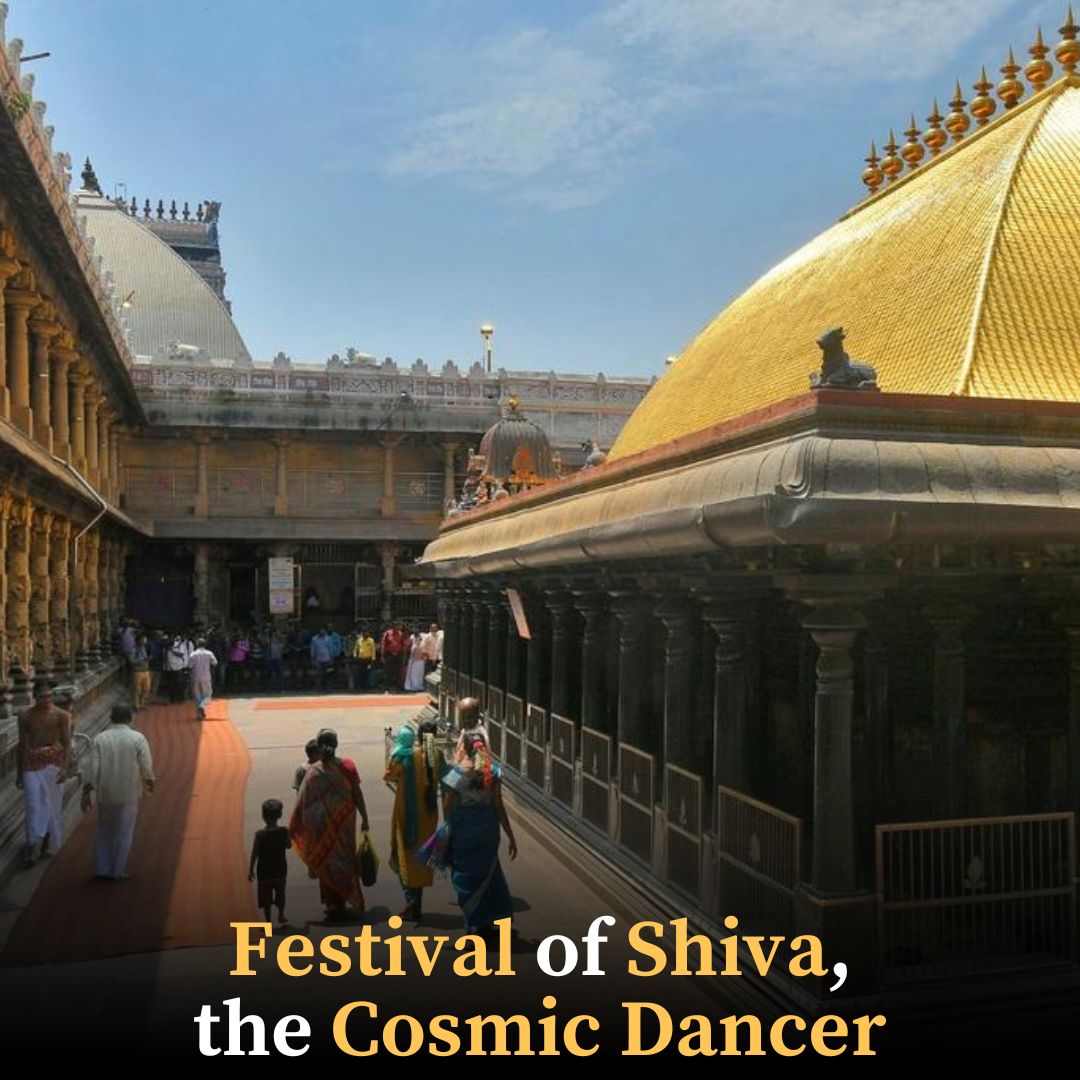Arudra Darshanam (Thiruvathirai) occurs during the Hindu solar month of Dhanu (Margazhi) when the Ardra constellation appears with the full moon. This festival marks the occasion when Shiva took the form of ‘Nataraja’ (the king of dance), to perform the cosmic dance; ‘tandava’. The festival is largely observed by Shaiva Hindus from parts of Southern India and Sri Lanka, who perform a Puja to Nataraja in the hours before dawn. Instead of pujas to the Shivalinga; the form in which Shiva is usually worshipped, during this festival the Murthi of the dancing image of Shiva Nataraja takes centre stage.
About the image: The Chitsabha (hall of Consciousness) at the heart of the Shri Sabhanayaga Temple in Chidambaram (Tamil Nadu). One of the most important centres of Saivism in the globe, this temple is home to the Shiva as Narataja who is depicted in the Ananda Tandava (dance of bliss). The Temple was established by Patanjali, the Rishi who brought the teachings of yoga to humanity. The philosophy of Yoga is encoded throughout what is one of the most architecturally distinct temples in Bharat. Instead of the usual cave-like structure (Garba Griha) where murthies are normally installed, here Narataja resides on an open wooden stage reflecting his role as a dancer. This structure is covered with 21,600 tiles of gold, which each represent the average number of breaths humans take in a day. Five steps lead into the Chisabha, reflecting the 5 syllables Na-Ma-Shi-Va-Ya (the mantra of Shiva). Across the diaspora, Tamil Saiva temples host a shrine dedicated to the Chidambaram Narataja – the focal point of this morning’s pujas.

